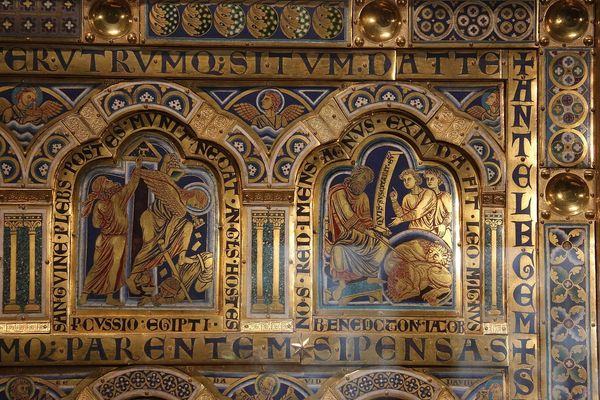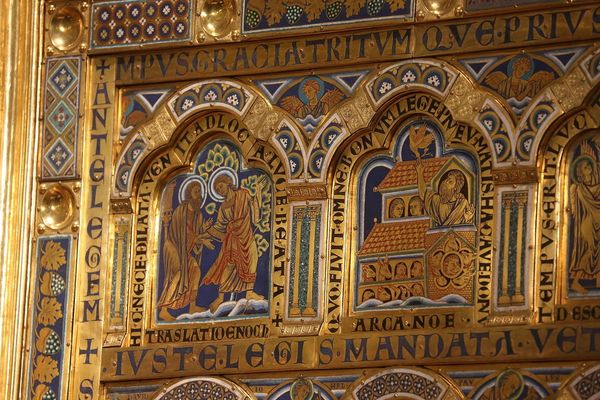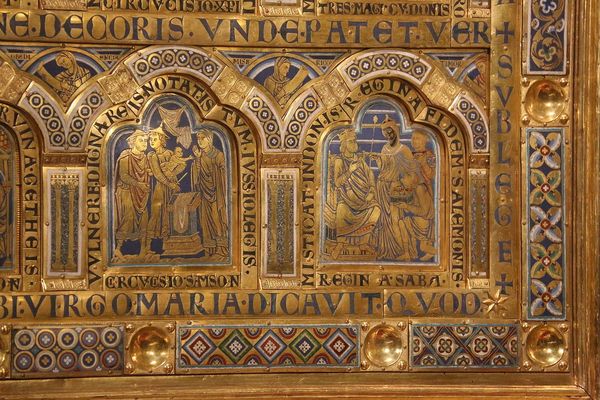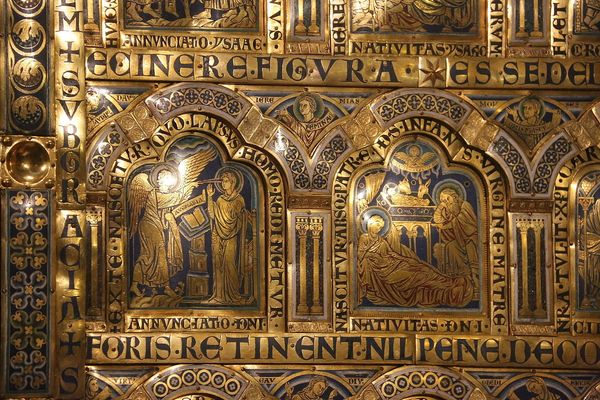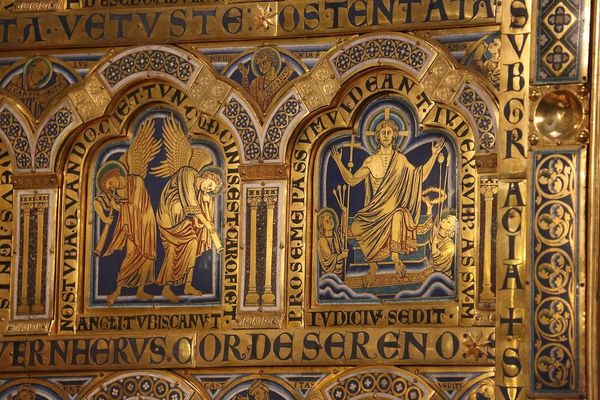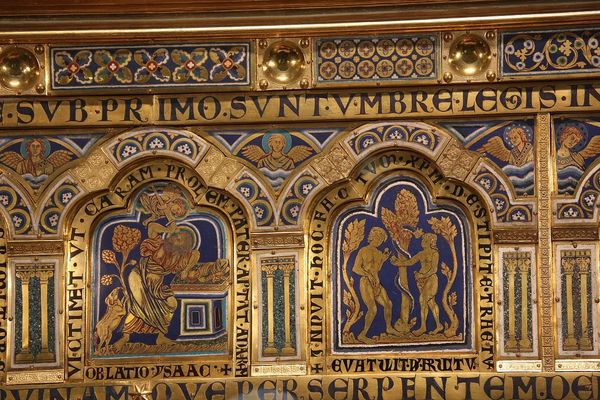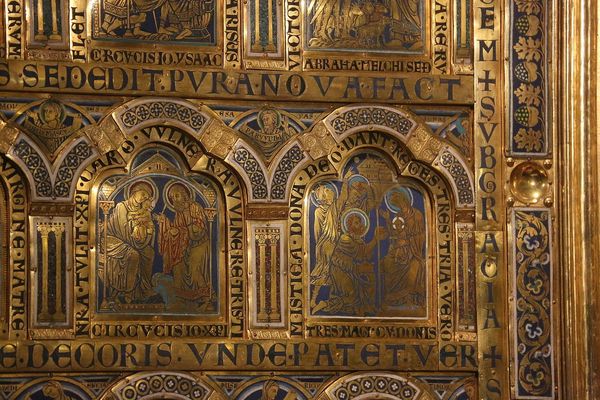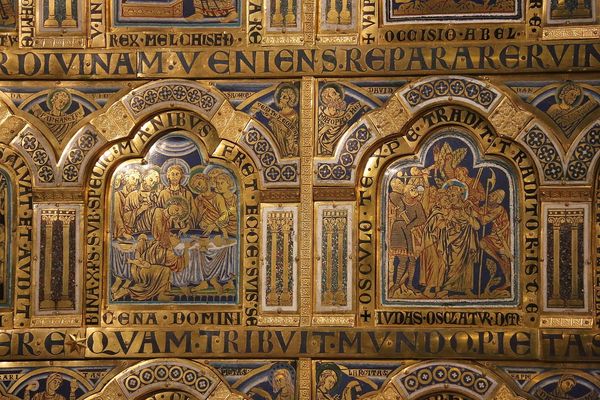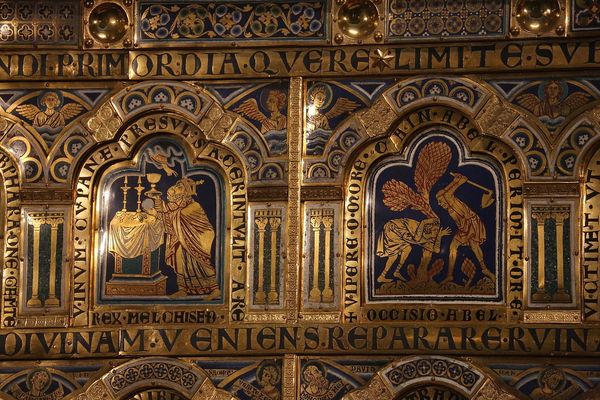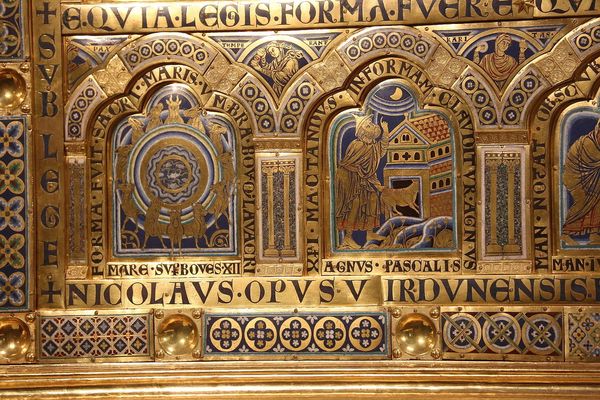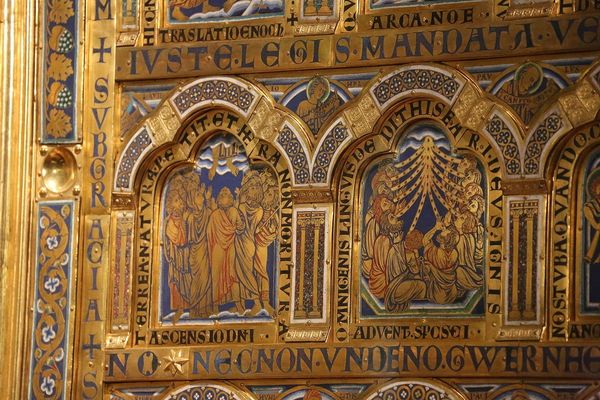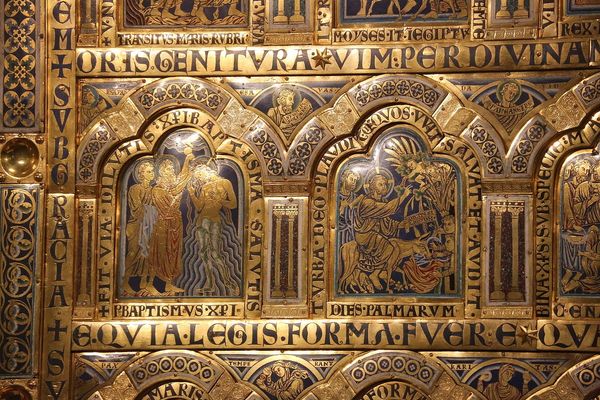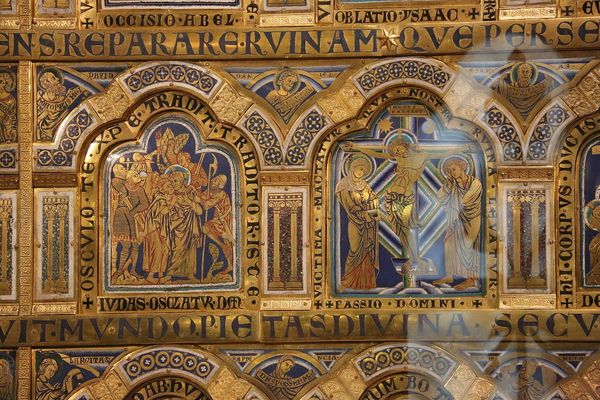
mosaic, carving, tempera, metal, gold, relief, guilding
#
mosaic
#
byzantine-art
#
medieval
#
carving
#
tempera
#
metal
#
gold
#
relief
#
holy-places
#
guilding
#
cultural heritage
#
historic architecture
#
traditional architecture
#
history-painting
#
historical building
Copyright: Public domain
The Klosterneuburg Altar was created in the 12th century by Nicholas of Verdun using gilded copper and enamel. Its creation occurred during a period of significant religious and political change, influenced by the rise of scholasticism and the complex relationships between the Church and state. The altar presents a visual and theological narrative. The altar's panels are organized thematically, drawing from both the Old and New Testaments. The meticulous craftsmanship and the use of costly materials speak to the wealth and power of the Church. The piece is replete with symbolism that would have been readily understood by the educated clergy, who were the primary audience for such works. The inscription emphasizes the shift from the Old to the New Covenant, reflecting a Christian interpretation of history. Consider the physical experience of encountering this altar in a dimly lit church, the gold glinting in candlelight, the stories unfolding in rich color. This artwork provided a focal point for contemplation and devotion, shaping the spiritual lives of those within its sphere of influence.
Comments
No comments
Be the first to comment and join the conversation on the ultimate creative platform.
